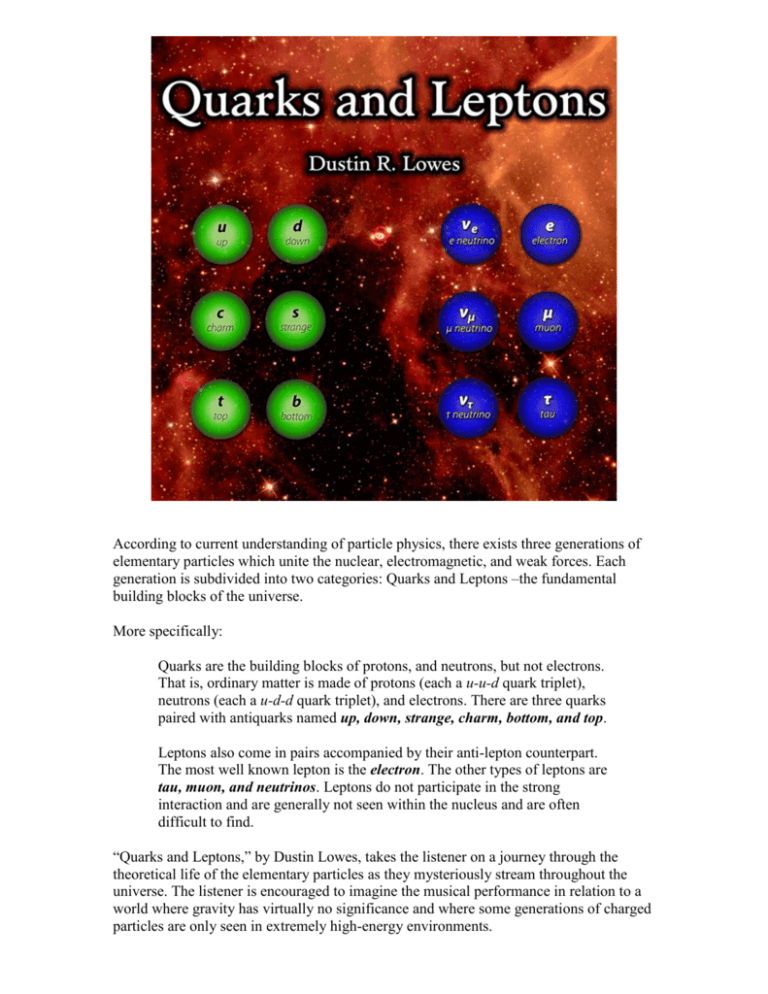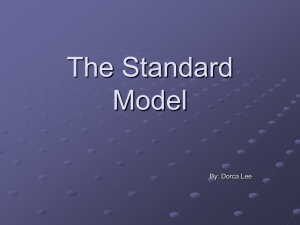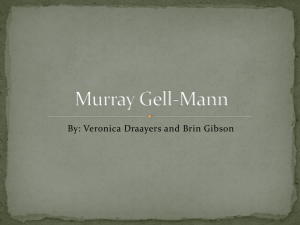Artist Notes - Dustin Lowes
advertisement

According to current understanding of particle physics, there exists three generations of elementary particles which unite the nuclear, electromagnetic, and weak forces. Each generation is subdivided into two categories: Quarks and Leptons –the fundamental building blocks of the universe. More specifically: Quarks are the building blocks of protons, and neutrons, but not electrons. That is, ordinary matter is made of protons (each a u-u-d quark triplet), neutrons (each a u-d-d quark triplet), and electrons. There are three quarks paired with antiquarks named up, down, strange, charm, bottom, and top. Leptons also come in pairs accompanied by their anti-lepton counterpart. The most well known lepton is the electron. The other types of leptons are tau, muon, and neutrinos. Leptons do not participate in the strong interaction and are generally not seen within the nucleus and are often difficult to find. “Quarks and Leptons,” by Dustin Lowes, takes the listener on a journey through the theoretical life of the elementary particles as they mysteriously stream throughout the universe. The listener is encouraged to imagine the musical performance in relation to a world where gravity has virtually no significance and where some generations of charged particles are only seen in extremely high-energy environments.











